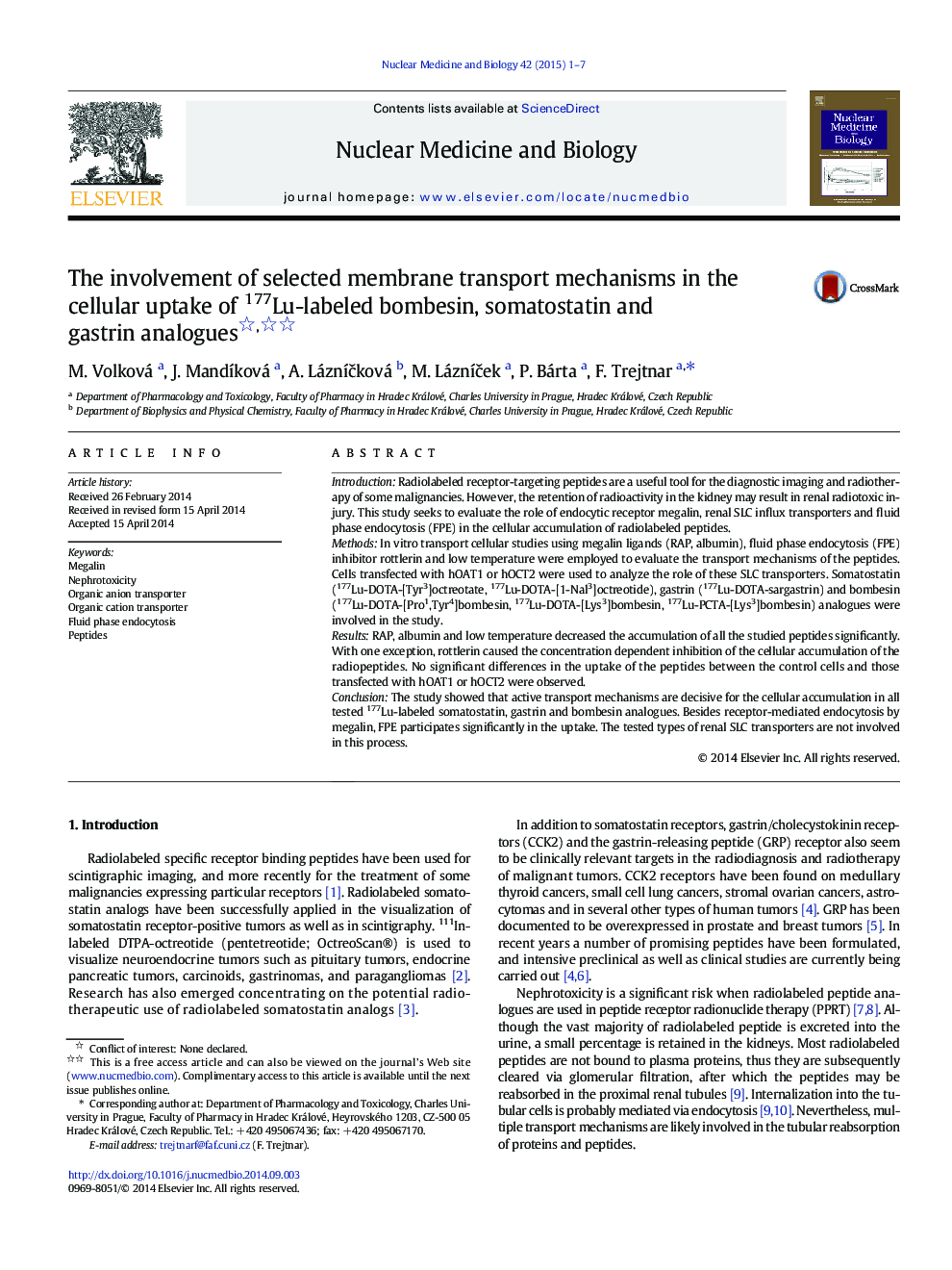| Article ID | Journal | Published Year | Pages | File Type |
|---|---|---|---|---|
| 2153405 | Nuclear Medicine and Biology | 2015 | 7 Pages |
IntroductionRadiolabeled receptor-targeting peptides are a useful tool for the diagnostic imaging and radiotherapy of some malignancies. However, the retention of radioactivity in the kidney may result in renal radiotoxic injury. This study seeks to evaluate the role of endocytic receptor megalin, renal SLC influx transporters and fluid phase endocytosis (FPE) in the cellular accumulation of radiolabeled peptides.MethodsIn vitro transport cellular studies using megalin ligands (RAP, albumin), fluid phase endocytosis (FPE) inhibitor rottlerin and low temperature were employed to evaluate the transport mechanisms of the peptides. Cells transfected with hOAT1 or hOCT2 were used to analyze the role of these SLC transporters. Somatostatin (177Lu-DOTA-[Tyr3]octreotate, 177Lu-DOTA-[1-Nal3]octreotide), gastrin (177Lu-DOTA-sargastrin) and bombesin (177Lu-DOTA-[Pro1,Tyr4]bombesin, 177Lu-DOTA-[Lys3]bombesin, 177Lu-PCTA-[Lys3]bombesin) analogues were involved in the study.ResultsRAP, albumin and low temperature decreased the accumulation of all the studied peptides significantly. With one exception, rottlerin caused the concentration dependent inhibition of the cellular accumulation of the radiopeptides. No significant differences in the uptake of the peptides between the control cells and those transfected with hOAT1 or hOCT2 were observed.ConclusionThe study showed that active transport mechanisms are decisive for the cellular accumulation in all tested 177Lu-labeled somatostatin, gastrin and bombesin analogues. Besides receptor-mediated endocytosis by megalin, FPE participates significantly in the uptake. The tested types of renal SLC transporters are not involved in this process.
